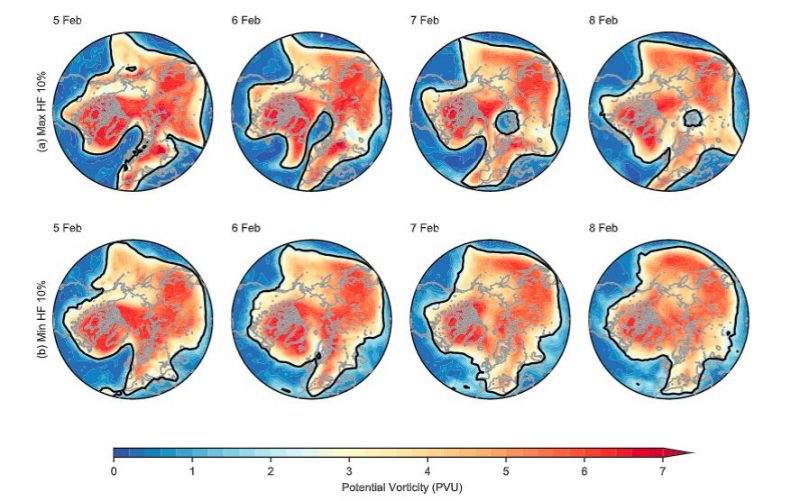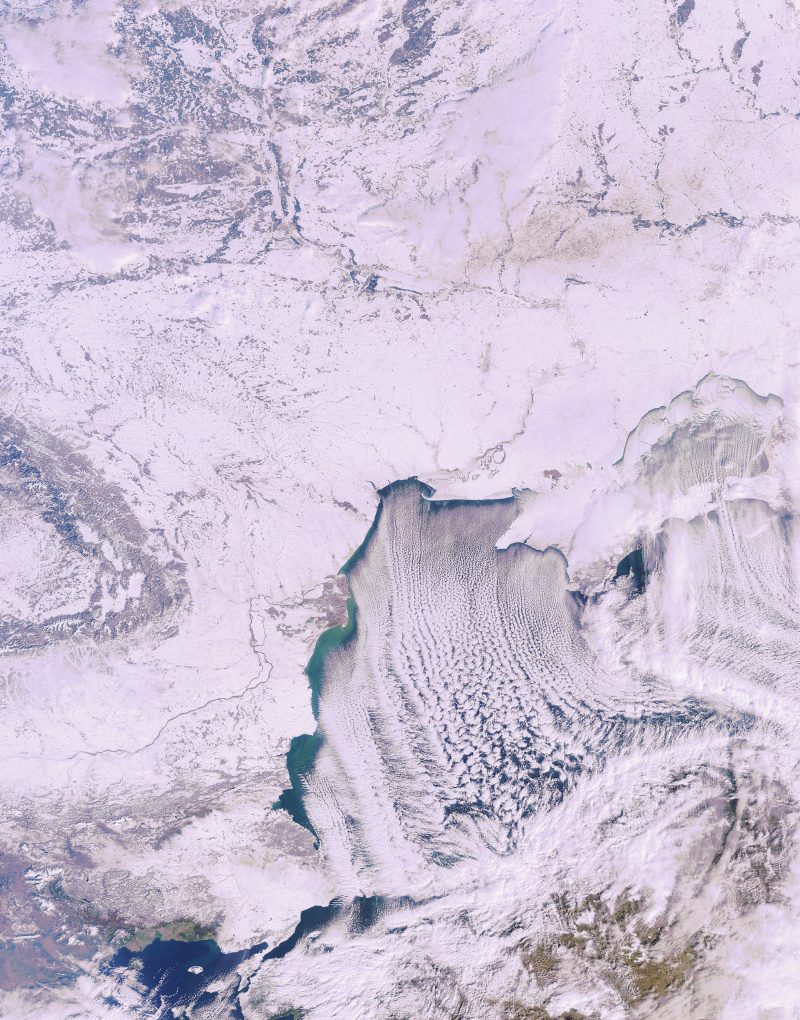17 September 2019
Scientists identify weather event behind extreme cold in Europe and Asia during February 2018
Posted by larryohanlon
By Abigail Eisenstadt
Researchers have identified a weather event that caused an unusually extreme cold wave to hit Europe and Asia during the winter of 2018, which could help atmospheric scientists better predict similar events in the future, according to a new study.
A wave of extremely cold air hit Eurasia in late February 2018, lasting for a month while temperatures broke record lows across Europe. The extreme cold came from a splitting of a cluster of air high above the Arctic, called the polar vortex.
Weather forecast models didn’t anticipate the stratospheric warming in 2018 until the start of February – only 12 days before it happened – which prevented the models from anticipating the extreme cold that followed.
Now, a new study in AGU’s Journal of Geophysical Research: Atmospheres finds a cyclone-induced chain of events warmed the stratosphere and caused the Arctic polar vortex to split in two, causing the extreme cold.
The information could help weather forecasts detect stratospheric warmings earlier and anticipate future cold waves, according to the study’s authors.

The top panel shows how some forecasts anticipated the sudden stratospheric warming, while the bottom shows what other forecasts anticipated. Ultimately, the warming appeared similar to the top panel forecasts’ predictions.
Credit: AGU
A trigger for sudden warmings
The stratosphere is the second layer of Earth’s atmosphere. It is typically cool, arid, and home to the Arctic polar vortex, a body of circulating cold air around Earth’s North Pole. If the stratosphere warms, the polar vortex weakens and splits in two, which can cause outbreaks of cold weather across the Northern Hemisphere.
To predict sudden warming events in the stratosphere, past research mostly studied how the troposphere — the lowest layer of the atmosphere and where Earth’s weather occurs — behaved on average prior to events in the stratosphere. But these models did not always catch how temporary weather patterns in the troposphere influenced the stratosphere.
In the new study, researchers tested their hypothesis that a chain of events in the troposphere caused the sudden stratospheric warming and subsequent splitting of the polar vortex. They first looked at weather forecast data in the days and weeks leading up to the sudden stratospheric warming event. They saw the forecasts only seemed to accurately predict the event when they captured a cyclone over Greenland and a high-pressure air mass over Scandinavia in the days before the stratospheric warming.
The weather sequence was a “trigger snap” that caused the vortex to split, said Simon Lee, an atmospheric scientist at the University of Reading in the United Kingdom and lead author of the new study. When the polar vortex split, a cluster of cold air around the Arctic pole dispersed and traveled southward toward Eurasia.

A satellite image of European extreme cold snap documents widespread snowfall throughout Eastern Europe. The image is of a past vortex-related cold wave during 2010. Credit: ESA, CC BY-SA 3.0 IGO
The research team also looked at historic weather data and found the same series of events has caused sudden stratospheric warmings in the past. They found these unusual weather patterns occurred 49 times between 1979 and 2017 and foreshadowed 35% of the stratospheric warmings in this period.
“It’s one mechanism that potentially explains a third of these events historically,” Lee said. “That just one event in the Atlantic has contributed to a third of them is quite surprising.”
Looking for changes in this particular air mass over Greenland and Scandinavia could improve weather forecasters’ ability to predict extreme cold outbreaks, adding to atmospheric scientists’ knowledge about sudden stratospheric warming events, according to the study authors.
Knowing when and how this weather pattern occurs gives scientists an ability to say what weather will be like in weeks and months in the future, Lee said.
Abigail Eisenstadt is a science writing intern at AGU. Follow her on twitter @aeisenstadt1


 GeoSpace is a blog on Earth and space science, managed by AGU’s Public Information staff. The blog features posts by AGU writers and guest contributors on all sorts of relevant science topics, but with a focus on new research and geo and space sciences-related stories that are currently in the news.
GeoSpace is a blog on Earth and space science, managed by AGU’s Public Information staff. The blog features posts by AGU writers and guest contributors on all sorts of relevant science topics, but with a focus on new research and geo and space sciences-related stories that are currently in the news.